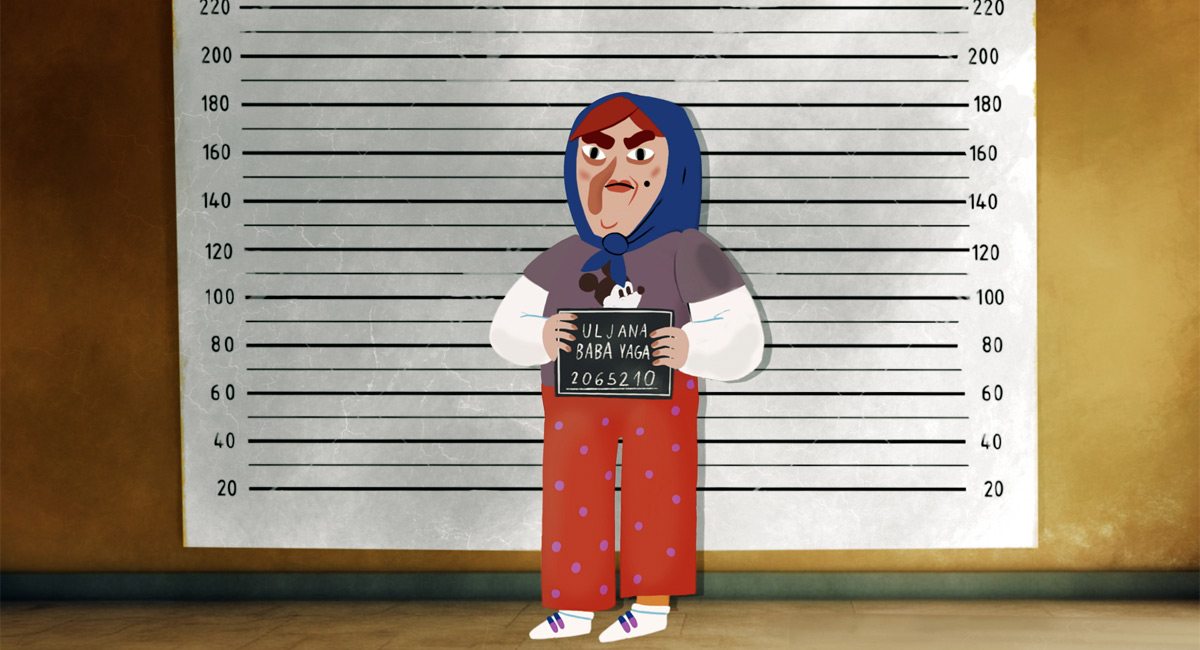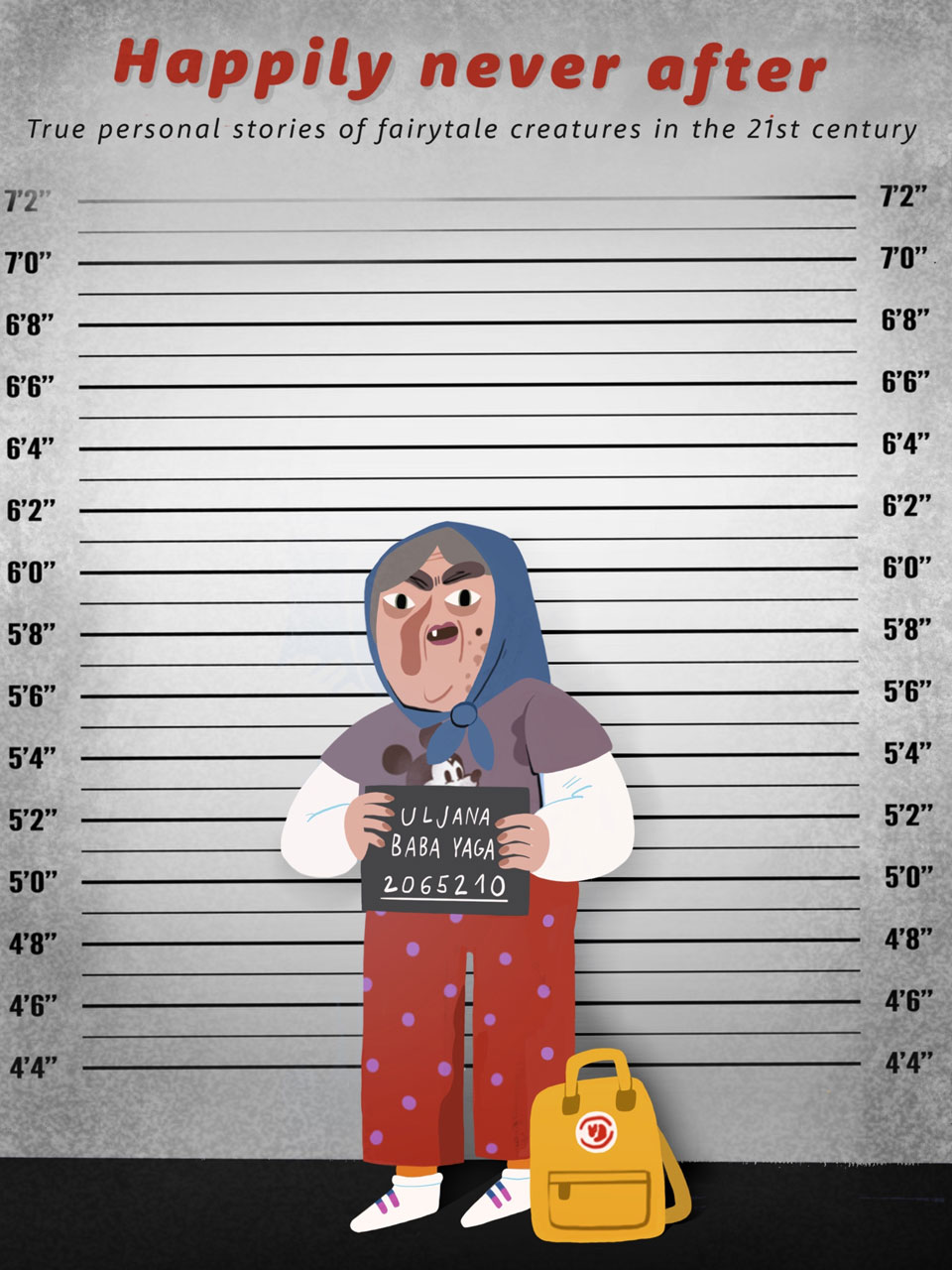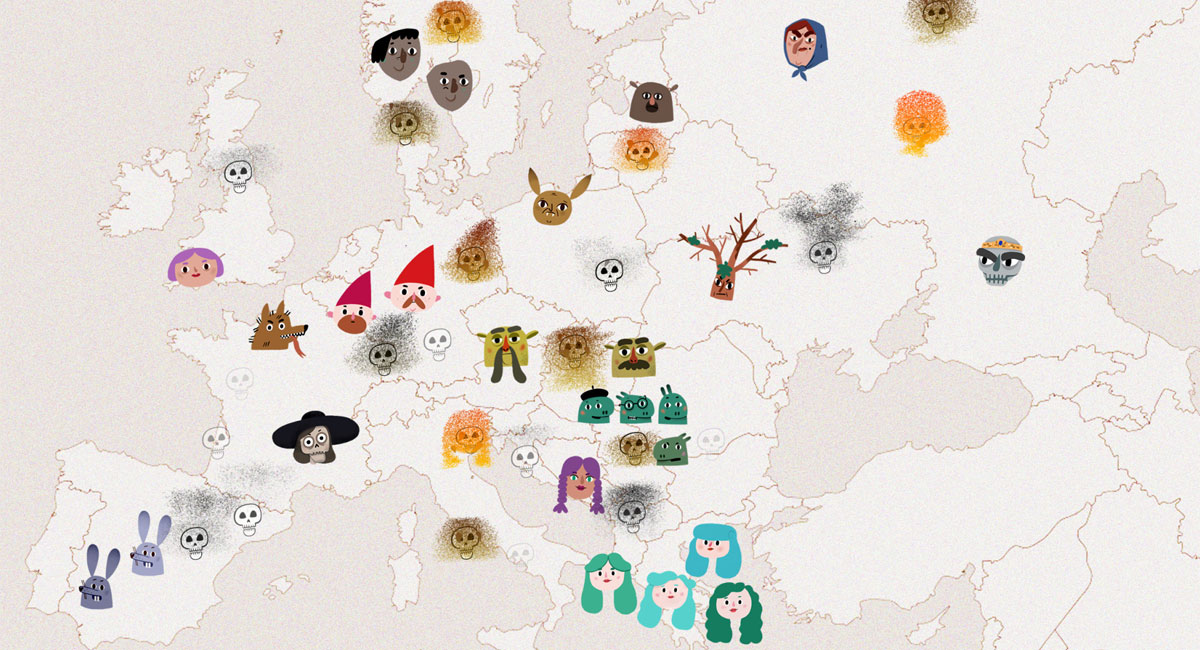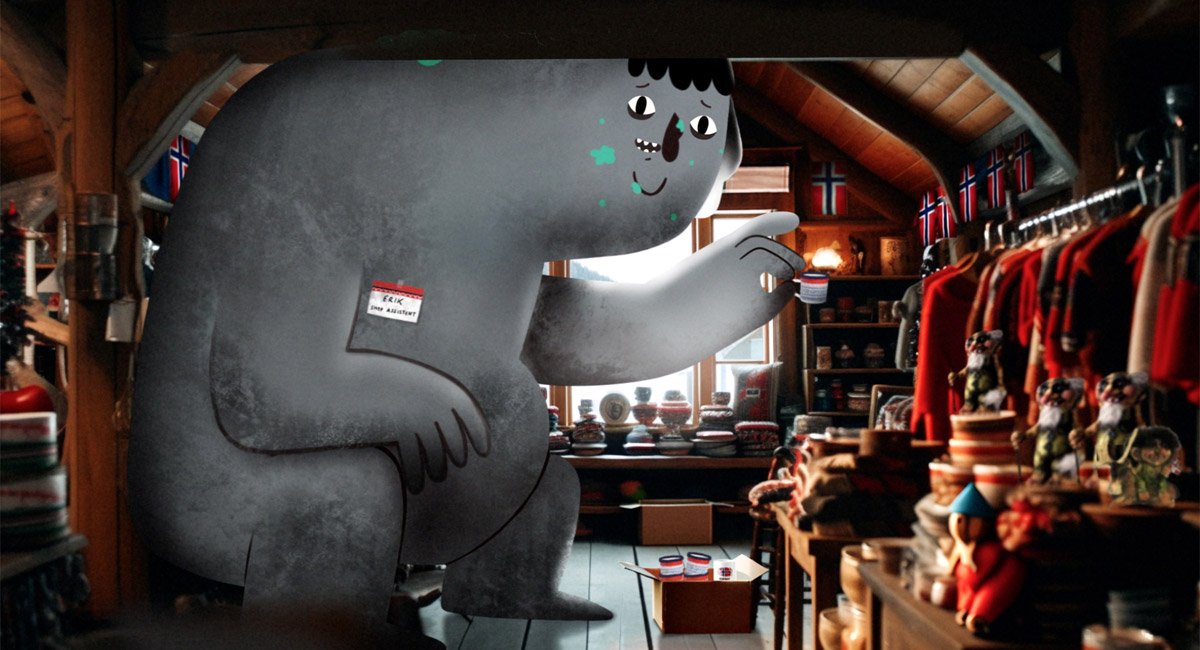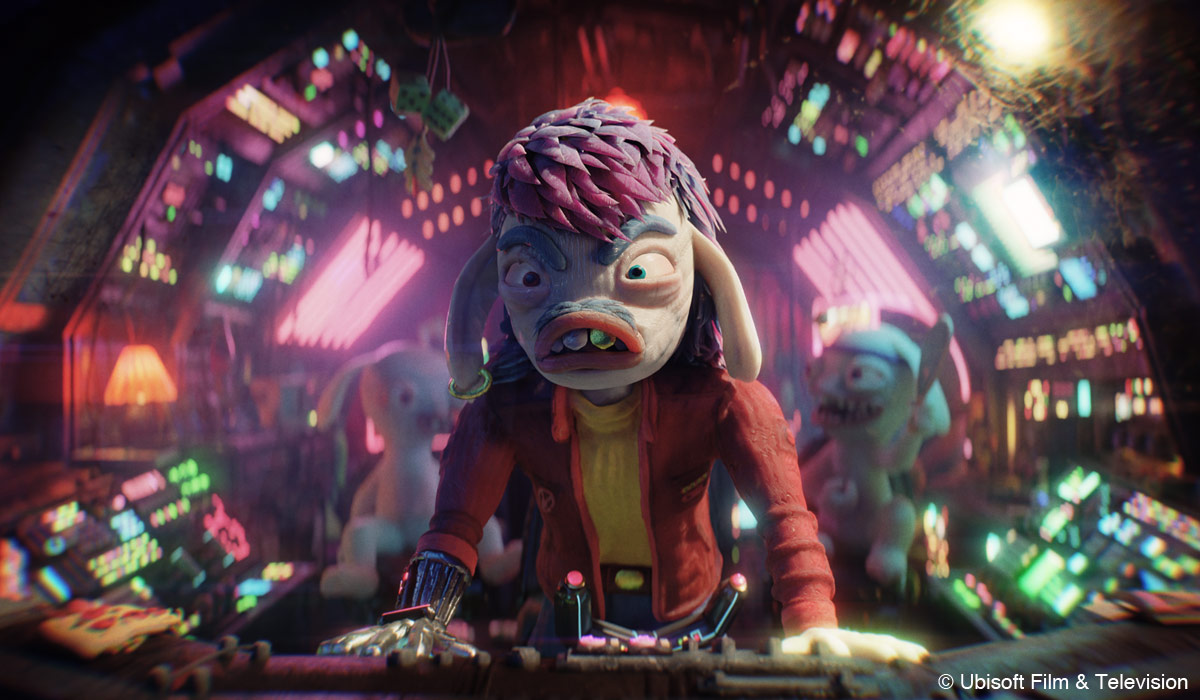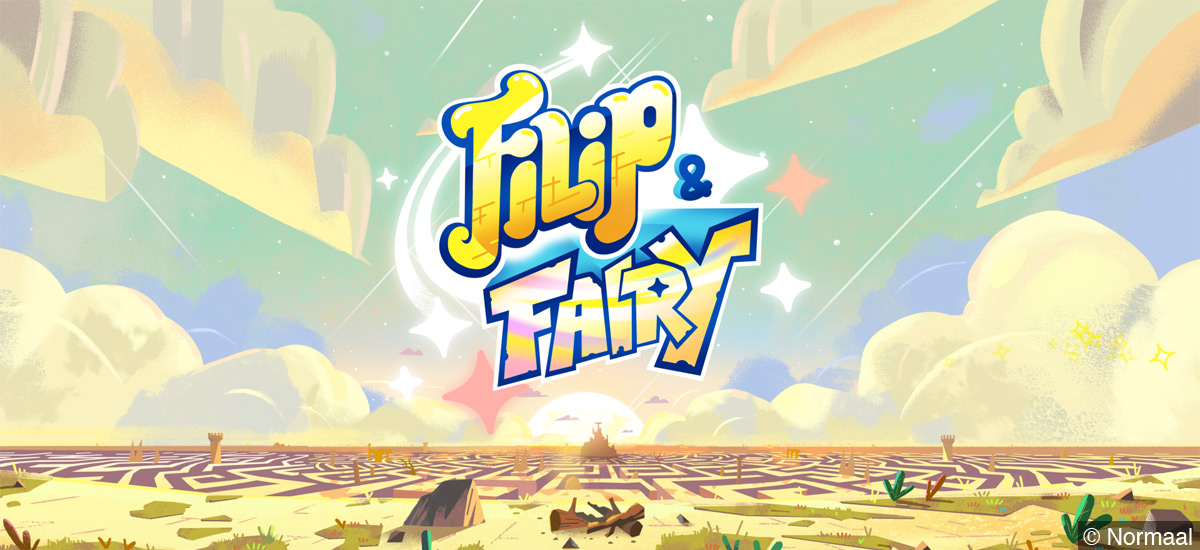Synopsis
Fairytale creatures as we know them are endangered species. Baba Yaga is going to court for her child-eating crimes, one of the last Water Goblins was recently found dead near Oldenburg, mermaids are getting unattractive… However, there’s hope! Documentarist Georg Neubauer studied these fascinating species his whole life and he cannot let it go on like that. They won’t be overlooked anymore. Not on his watch! He starts to produce a documentary series about nature, life and the unclear future of the different fairy tale creatures. His weapons are truth, passion and a low budget camera. But soon he‘ll find out, the biggest threat to the fairy tale creatures are… The creatures themselves!
Happily Never After
Directors: Alžběta Zatloukalová Göbelová and Gabriela Hloz
Authors: Alžběta Zatloukalová Göbelová and Gabriela Hloz
Producers: Mária Môťovská (Heliumfilm, Czech Republic) and Georg Neubert (Reynard Films, Germany)
Format: 10 X 20’
Target audience: Young Adultd / Adults
Techniques: 2D digital / Live action
Happily Never After is a TV series project featuring a fantasy comedy story, aimed for an adult/young adult audience. The series was pitched at Cartoon Forum 2023.
In Happily Never After, we meet well-known fairytale characters in a fresh and humorous narrative, filled with the ironies of modern society.
We interviewed Alžběta Zatloukalová Göbelová and Gabriela Hloz, the co-directors and co-authors of the series, and Mária Môťovská, the main producer, on the story behind Happily Never After.
Interview with Alžběta Zatloukalová Göbelová, Gabriela Hloz, and Mária Môťovská
Hideki Nagaishi (HN): Could you please let us know what part of this animation series you think will be the most appealing or attractive to the prospective audience?
Gabriela Hloz: As we are developing the stories of our characters and writing the scripts, we witness the creation of a tongue-in cheek comedy series with themes and topics related to current issues in society. That is the value we see in this project: to give the audience these fun stories about washed-out fairytale creatures conveying important messages about the world and humanity itself.
HN: How did this project start? And what made you decide to produce this project?
Mária Môťovská: The idea developed quite naturally. I was approached with what was originally a short stop-motion film by Gabriela and Alžběta, my former classmates at Tomas Bata University in Zlín, whose visual style I have always admired. We are close and similar both in personality and in our perception of audiovisual creation, and we both had a good feeling about it from the beginning of the collaboration. The kind of feeling where you know you want to create something new, unique, and different together. To give each other the opportunity to show our work in a different sphere than what we were used to before, and to give each other the opportunity to fully engage creatively without any limitations.
HN: Where did the initial idea of the story come from?
Alžběta Zatloukalová Göbelová: The initial idea came from one of my illustrations. I was just doodling around and drew an angry, chubby forest fairy next to a pond full of garbage. Later when I looked at that drawing, I had the idea that it could be a fun, animated interview about how she sees the world today: about what is bothering her, about how she is not able to lure the guys anymore when beauty standards changed so much. And it could nicely reflect today’s society in an ironic way. I told Gabriela about it and together we continued to develop the idea further. It seemed like a pity back then not to interview all the other fairytale characters, where they all would have a lot to say and could show us a reflection of ourselves.
HN: What part of the project is especially exciting or challenging for you as a producer?
Mária Môťovská: I think it’s exactly the fact that it’s something completely new for me, where for the first time I’m involved not only as a producer but I’m also involved in the dramaturgy and the scripts, as we’re more or less making it all together as a group. It’s a new challenge for me, which sometimes scares me but I enjoy it a lot.
HN: What are you taking care in the most when you develop the story, and what parts of the story are challenging or exciting to create for you?
Gabriela Hloz: When coming up with a story and theme for each episode, we always look at the character as a real human being coming from a certain culture, with real fears, dreams, flaws, and talents. As every episode follows a unique fairytale character as the protagonist, it is important that it feels like we are watching an actual human being that we might know from real life. From there, we think about what could be the biggest challenge this character would face in this day and age. And somehow, this challenge always mirrors the challenges we face as people or society at large, or involving the society in the story in a way that puts us humans on the spot.
Just the process to combine all these layers together with humor is the biggest challenge for us. We are not here to primarily teach and preach; we want a good, funny series that plays out interesting topics.
HN: I would like to hear the story behind the visual creation. What kind of visual characteristics are you aiming to achieve?
Alžběta Zatloukalová Göbelová: As we are both animators and illustrators, it started naturally. We just drew in our style. So, the foundation is simple in that way. The visuals of characters are based on different tales in which they appeared, but having some attributes which shifts them to today’s world. Baba Yaga is wearing a Billie Eilish t-shirt and a Fjällräven backpack because it is what was left of her young victims. Sirene is using an iPhone because it is much easier for her to lure the guys via online dating apps, and so on.
At the beginning, we had the idea that, as we pretend that it is a documentary, it should somehow have a more realistic depiction than just drawing. We were thinking about puppet animation because we could reach for more of a documentary look by using a realistic camera.
Meanwhile, I was randomly making some visualizations of shots using realistic backgrounds and drawing characters onto that, just to show the team or others some ideas. And somehow it worked. It was weird, as it didn’t belong to the idea of fairytale characters as we know them, yet it fitted perfectly to our story and intention. So, we decided that this was it.
HN: What is the current status of the project?
Mária Môťovská: We have already done quite a lot of pitching and presentations with the project, as well as the year-long CEE Animation Workshop, where we developed the project. We have won several awards and have been supported by a State film fund, a Regional fund and also in collaboration with a German co-producer we have received support from Creative Europe Media! We have finished the script of the first episode, written out the next two episodes and produced the trailer. As part of the development and support we have received, we want to write 5 scripts and start financing the production. You can always follow our stages and experience the journey with us by following us on our Instagram.


